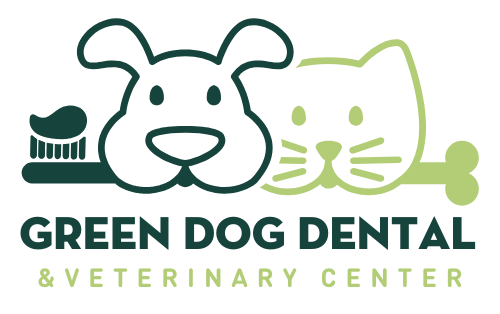
Anybody who has ever owned a puppy or a kitten will tell you, the first weeks and months of a dog or cats life are incredibly important. Just like human children, puppies and kittens are little sponges, and much of what they learn in there early days will stay with them throughout the rest of their lives. Green Dog Pet Products has some tips for healthy oral hygiene that will pay off for you and your pet in the future.
START GOOD HABITS WHEN THEY ARE YOUNG
Puppyhood and kittenhood is a time to firmly cement positive habits that will help your pet to grow up to be an amiable and obedient canine companion. And when it comes to brushing or cleaning teeth, there’s no better time to start that healthy habit than the day bring your new baby home!
CREATE A POSITIVE EXPERIENCE
Most dogs and cats do not particularly enjoy having their teeth brushed or cleaned in any way. That’s just a fact, and it’s unrealistic to expect that your pet will enjoy their dental hygiene routine. However, it’s absolutely possible to train your dog or your cat to at least accept having their teeth brushed as long as it becomes a matter of habit. The most important thing is to create a positive association with the experience, so introducing them to the toothbrush and toothpaste should be done as early as possible and as gently as you can.
TAKE THE FIRST STEP
The first step in getting your puppy or kitten used to having their teeth brushed or cleaned is getting them used to having their mouth, gums, and teeth touched. You can stick your fingers in their mouth, run your hands along their gums, and familiarize them with the sensation of having something besides food in their mouth.
TOOTHBRUSH OR DENTAL SPRAY
Once your pup or kitten seems to be OK with this, you can introduce the brush or a cleaning method such as smileWIPES very slowly. We advise letting them lick toothpaste if you are using a toothbrush, and only begin to actually brush once they’re familiar with the instrument. You can brush one tooth once a day for a week until they get used to this new sensation. If they seem a little freaked out, slow down!
Another option is a dental spray which eliminates some steps that might be problematic. The spray goes on a gauze pad and is used to wipe over the teeth. The essential oils in smileSPRAY help to remove plaque which if left undisturbed will become tartar and only a dentist can remove tartar.
MAKE SURE IT TASTES GOOD
Choosing a toothpaste that tastes good, such as poultry or beef as opposed to mint, can make a big difference in whether or not they accept having their teeth brushed. If they like the taste of the toothpaste they’re more likely to look forward to the occasion. Dental sprays come in different flavors but avoid ones with alcohol or water.
DON'T FORGET THE REWARD!
Once you’ve finished brushing your dog or cat’s teeth, it’s important to reward them. It’s crucial that they have a positive association with toothbrushing and teeth cleaning. Also, if your pet seems fearful or upset, don’t force it! Re-introduce the everything gently and slowly and be patient with them.
Forcing your dog or cat or pinning them down and holding their mouth open will only make them dislike the experience more and can make life more difficult for the both of you.
This may not be your favorite thing to do with your pet but a longer, healthier life will be the reward!
